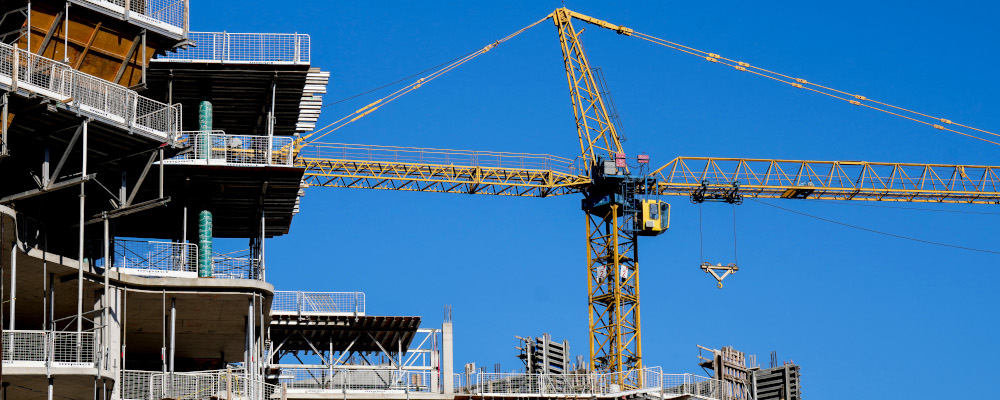It’s no surprise to anyone that the Greater Toronto Area is short on housing. One need only ask renters or first-time homebuyers whether enough homes are available to rent or buy, and at prices they can afford.
Indeed, the GTA-wide rental vacancy rate (a measure of rental unit availability) was 1.7 percent for purpose-built rental units and 1.1 percent for rented condominiums in 2022, well below Canada’s three-decade average of 3.2 percent. Predictably, rents have risen sharply, hurting all renters but especially the most vulnerable.
Clear demand for housing in Canada’s largest urban region raises important questions about supply. How many homes are built in the GTA, and where?
In recently-published research, we answer these questions using data from the two most recent censuses, conducted in 2016 and 2021. In total, the number of homes across GTA communities grew by roughly 160,000 homes over this period—a seven percent increase. We further divided this growth across the GTA’s 1,227 census tracts (neighbourhood-sized urban geographies).
As it turns out, the GTA’s housing stock growth (the change in the number of homes region-wide) was far from evenly distributed. In fact, more than half of all housing stock growth occurred in Downtown Toronto or at the urban fringe of far-flung suburbs such as Vaughan, Markham, Brampton, Milton, and Pickering. Meanwhile, the bulk of census tracts located in between these two areas barely grew at all.
The geographic distribution of housing stock growth between 2016 and 2021 was highly concentrated within a three-kilometre radius of Union Station and on the urban fringe—34 kilometres from Union Station and beyond. The 270 census tracts located in these areas added 304 homes, on average, between 2016 and 2021, while the 957 census tracts located between 3 and 34 kilometres from Union Station added just 80 homes, on average, with many even losing more homes than they added. This “donut” pattern of growth has several policy implications as the region attempts to overcome a generational housing shortage.
First, slow-growing central neighbourhoods and communities can accommodate a lot more housing. In fact, well over one third (370 out of 957) census tracts located between three and 34 kilometres from Union Station exhibited a net loss of housing between the last two censuses. It’s one thing to argue that a neighbourhood is already “full,” and thus can’t add anymore housing, but it’s hard to see how allowing desirable neighbourhoods to lose homes is justified.
Second, the steep decline in housing stock growth immediately outside the regional core (Downtown Toronto) is a strong indication of policy barriers to homebuilding in otherwise highly desirable neighbourhoods, rather than implying weaker demand to live there. Our research shows that census tracts between two and three kilometres from Union Station added more than 12,000 homes between 2016 and 2021, while tracts between three and four kilometres from Union Station added fewer than 3,000 homes. For context, this includes neighbourhoods such as the Annex, Rosedale and Cabbagetown—among the most expensive in Canada.
Third, faster-growing pockets in more distant communities are partially reflective of deliberate efforts to develop additional nodes of transport and commerce beyond the regional core, but could also be the result of insufficient homebuilding in desirable central neighbourhoods. Intuitively, it is likely that some percentage of households residing in outlying areas do so as a result of insufficient or unaffordable housing options closer to the regional core, which concentrates a higher proportion of the GTA’s employment, educational, commercial and entertainment features.
Empirically, past research measuring the link between land-use regulation and housing supply found that many parts of Brampton and York Region would have grown more slowly between 2006 and 2011 had regulatory barriers such as lengthy, uncertain project approval timelines and local opposition been relaxed in neighbourhoods closer to the regional core.

To their credit, policymakers in Queen’s Park and at City Hall have taken notice. The province recently passed legislation aimed at making it easier to build more homes in existing neighbourhoods, most notably by allowing up to three housing units on most single-family lots. Toronto has gone one step further by allowing up to four units “as-of-right” (that is, without the need to rezone). These are important measures, but by no means perfect. Beyond the number of units allowed by local zoning bylaws, a raft of stipulations limit the size, style and shape of buildings, as well as the number of parking spaces required. In other words, there’s a whole lot more that could be done to “unlock” more housing in slow-growing neighbourhoods across the GTA and beyond.
Relatively fast housing stock growth Downtown and in select outlying districts plays an important role in closing the gap between demand and supply, but given the magnitude of unmet need for housing in Canada’s largest urban region and primary port of entry, all governments have a role to play in enabling the construction of more homes across more neighbourhoods and communities.
Recommended for You

Need to Know: Beware the bait-and-switch of campaign promises

Mike Moffatt: There’s a lot going on, but let’s not forget about the housing crisis

Matt Spoke: Canada needs a smarter approach to housing taxation

‘An era of deep uncertainty’: Theo Argitis on how Trump’s trade war is affecting Canadian housing



